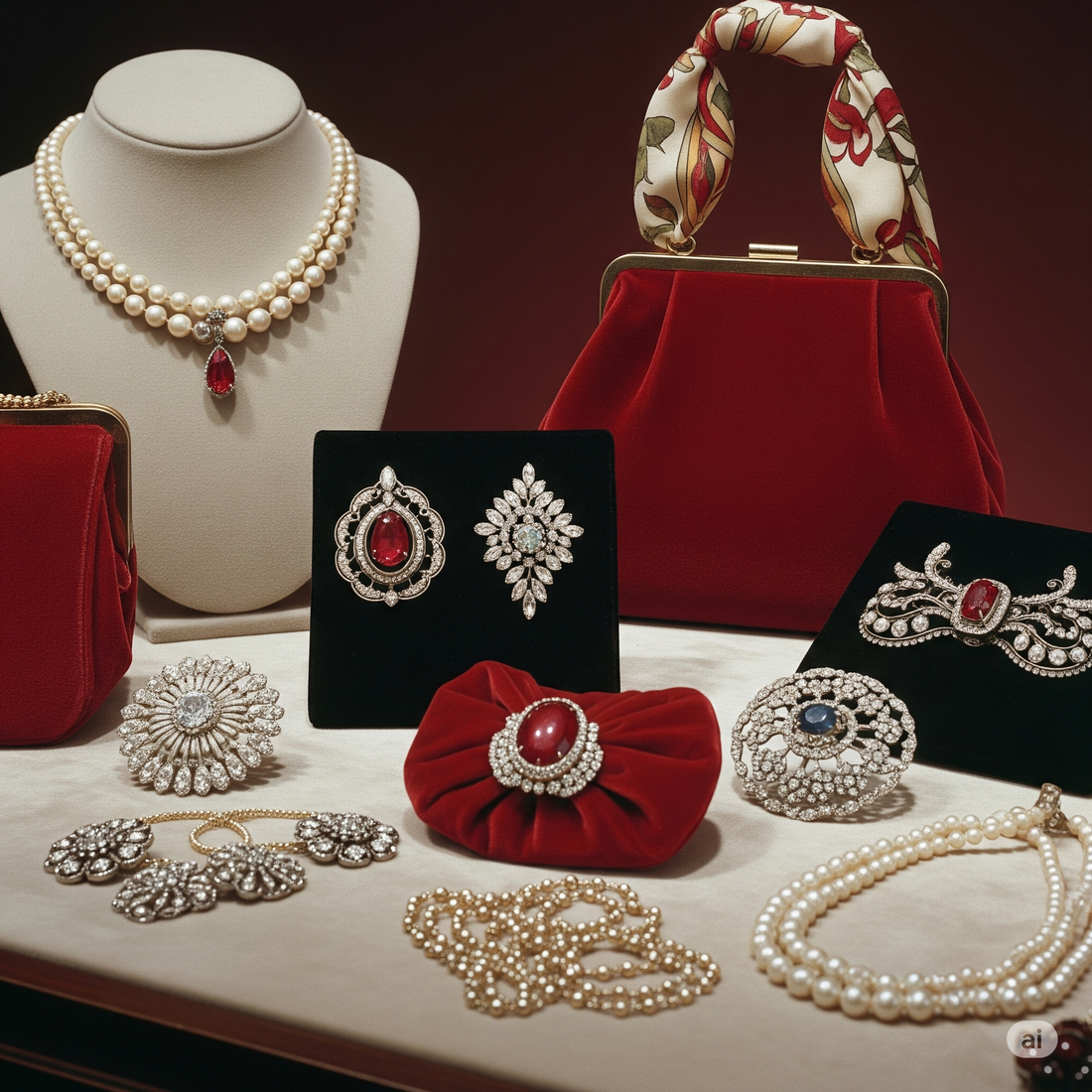
Vintage Accessories
Share
Why Vintage Accessories Are Essential
Distinctiveness: Vintage accessories—be it jewelry, scarves, or handbags—transform any outfit from ordinary to unique.
Quality Materials: Items were often made to last, using real metals, hand-stitched embellishments, and durable fabrics.
Conversation Starters: Vintage pieces are great talking points and connect you with others who appreciate style with a story.
Vintage accessories possess a timeless allure, offering both a glimpse into the past and a unique way to express personal style in the present. Their history is woven into the fabric of fashion, reflecting changing social attitudes, technological advances, and evolving notions of beauty and status.
What Defines a Vintage Accessory?
A vintage accessory is typically a fashion item at least 20–30 years old, distinguished by its quality craftsmanship, unique design, and historical significance. These pieces—ranging from gloves and hats to handbags, jewelry, and sunglasses—not only complete an outfit but also carry the spirit of their era.
The Evolution of Vintage Accessories:
Early Roots: Accessories such as brooches—originally known as fibulae—date back to the Bronze Age, serving both practical and decorative roles. As centuries passed, metalworking techniques flourished, and brooches evolved from plain fasteners to exquisite, gemstone-adorned pieces, especially in the hands of Celtic and Germanic artisans.
The 19th and Early 20th Century:
Gloves were an essential symbol of refinement and social status, with lace gloves signifying elegance for women and leather gloves a mark of taste for men. The 1950s saw gloves reach new heights of glamour, popularized by Hollywood icons before casual styles in the '70s diminished their everyday relevance.
1920s–1930s: The Jazz Age and the Depression brought dramatic shifts. The 1920s introduced pearl necklaces, sequined handbags, headbands, and opera gloves as must-haves for fashionable women. By the 1930s, costume jewelry surged onto the scene, as economic hardship fostered inventive designs with new materials like rhinestones and silver-toned alloys, replacing precious stones and metals.
Mid-20th Century: Sunglasses and handbags became iconic in the 1950s. Cat-eye sunglasses, structured leather bags, and silk scarves gained widespread popularity, offering a sense of sophistication and functionality. Chunky jewelry—oversized bracelets, statement rings, and bold necklaces—captured the vibrant spirit of the 1960s and 1970s disco eras.
Late 20th Century: The psychedelic prints and bold patterns of the 1960s and 1970s were reflected in accessories like scarves and foulards, often worn as headwear or tied around bags. The 1980s saw a resurgence of playful accessories such as fingerless gloves, re-popularized by youth icons like Madonna.
Iconic Pieces and Their Cultural Impact
|
Accessory |
Signature Era(s) |
Notable Features & Significance |
|
Gloves |
1900s–1950s, 1980s |
Elegance, social status, Hollywood glamour |
|
Brooches |
Bronze Age–1950s |
Practical fasteners, then elaborate statements |
|
Costume Jewelry |
1930s–1970s |
Affordable luxury, creative materials, bold expressions |
|
Sunglasses |
1950s–1960s |
Cat-eye, aviator, butterfly; movie star mystique |
|
Handbags |
1920s, 1950s–today |
Art Deco bags, iconic designer pieces, status symbol |
|
Scarves & Foulards |
1960s–1970s |
Psychedelic prints, versatile styling |
|
Hats & Headbands |
Varies by era |
From berets to wild ‘70s headbands |
The Modern Revival
Today, vintage accessories are highly prized for their individuality and craftsmanship. Fashion enthusiasts seek out original pieces from past decades, not just for nostalgia, but to add statement flair and sustainable substance to contemporary wardrobes. The fusion of vintage finds with modern basics brings new depth and personality to everyday style, ensuring that these accessories remain anchors of chic self-expression.
By learning the stories of vintage accessories—the artisanship, the cultural significance, and the cyclical nature of their trends—we honor the past while continuing to redefine the future of personal style.
